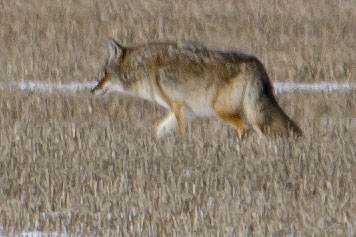
A coyote prowls the Creston flats foraging for voles and mice.
The expedition began with an inquiry from Michael McMann: would I like to accompany him to the Creston flats to photograph Rough-legged Hawks? I grab any opportunity to head into the field with such a knowledgeable naturalist, so on Friday we crossed Kootenay Pass on our way to the flats.
The Creston flats occupy the broad valley bottom at the south end of Kootenay Lake. It is now the home of small lakes, marshes, farms and—as a testimony to the diversity of its wildlife—the Creston Valley Wildlife Management Area. Originally the area was the flood plain of the Kootenay River where it flowed into Kootenay Lake.
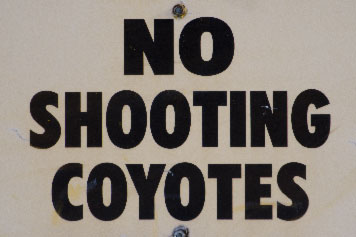
This sign shows that farmers appreciate the services of coyotes.
In 1935 dykes were built along the river and this allowed some of the land to be used for farming. Grain farming attracts rodents; rodents attract predators: coyotes and raptors. Certainly, we saw coyotes hunting in the fields—even in snow-covered fields. (In a posting last March, Coyote hunting, I showed the technique they use to hunt for voles under the snow.)
But, it was the raptors we went to see—principally the Rough-legged Hawk, a species I had not seen before. It was one of five different species of raptors seen that day, pictures of which are below. (Some other birds seen will form a second posting.)
The first raptor seen was a Red-tailed Hawk. Quite a few of them were seen during the day. This shot of one calling might be entitled: Now Hear This!
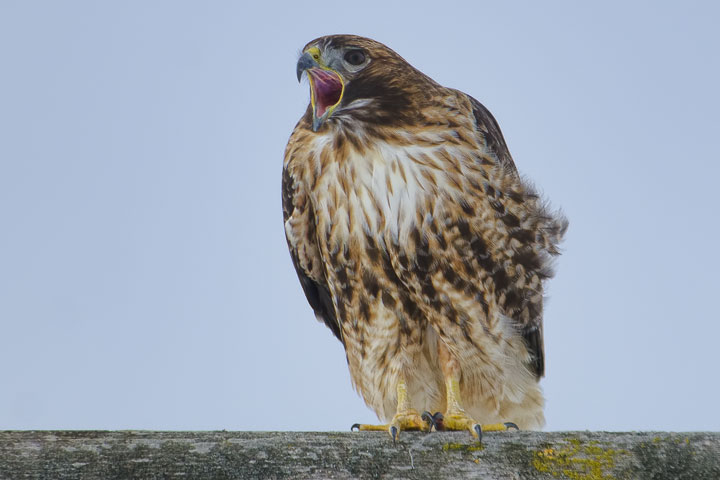
A Red-tailed Hawk flying. I see these hawks on the West Arm mainly in the springtime before leaves obscure perching banches.
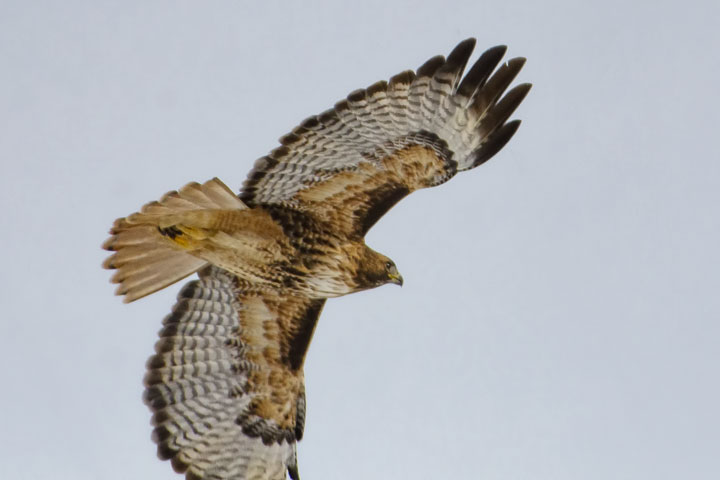
The next raptor spotted was an eagle. Well, this was no big deal: I see them frequently around home (one is sitting outside my window as I write) but, it was nice to add this to the list of raptors seen on the Creston flats.

Then the first of a few kestrels was seen. This one was on a power wire. It is a female.
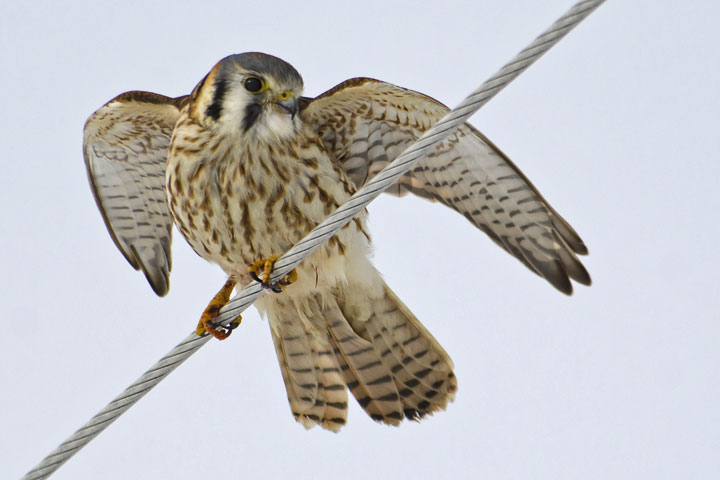
This one had taken flight.

Finally, we saw a Rough-legged Hawk. It was sitting on the cross-bar of a power pole when it rose to fly off. With its dark belly and feather-covered legs (the origin of its name), it looked as if it were performing some tai chi.

It was soon in the air.
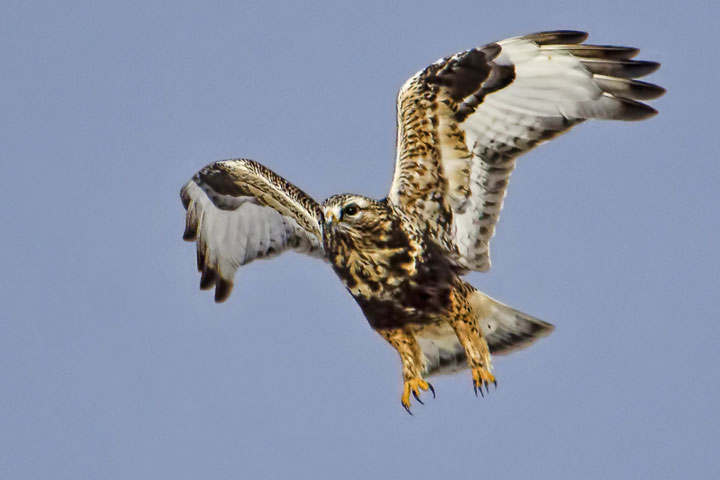
An unexpected find of the day was a Northern Harrier (female). Its owl-like face is apparent.
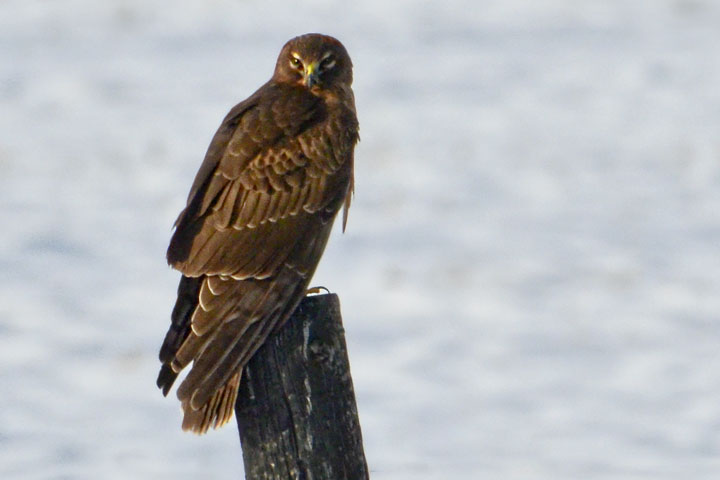
When hunting, a harrier flies close to the ground listening for sounds made by rodents.

Five raptor species were seen in one day—two of them new to me. Thank you, Michael.

Thanks, Alistair
I still have a hard time identifying even common hawks, so such sharp close-up pics sure help.
Congrats on a 5 hawk day ! excellent !
We marvel at the detail in your wonderful photos. Thanks for sharing them in preparation of Michael’s presentation on raptors.
Muriel & John
Great pictures. Thanks